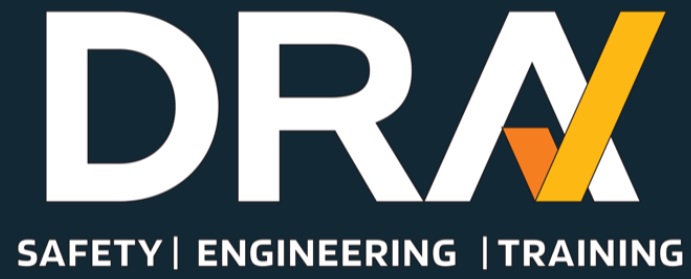 Globally Harmonized System of Classification and Labelling of Chemicals (GHS).
Globally Harmonized System of Classification and Labelling of Chemicals (GHS).
Hazardous chemical management is essential for organisations that store and/or hazardous chemicals and a competent safety consultant can greatly assist this process. There needs to be a clear distinction between this term of Hazardous Chemical and Dangerous goods as the current legislative requirements rely heavily on terminology out of the Globally Harmonized System of Classification and Labelling of Chemicals (GHS).
The difference between ‘Hazardous Chemicals’ and ‘Dangerous Goods’
The terms “Dangerous Goods” and “Hazardous Chemicals” are often used interchangeably, but there are actually some key differences between the two. Both Dangerous Goods and Hazardous Chemicals have the potential to cause harm to people, property, and the environment, but the way in which that harm can be caused differs.
Dangerous goods may be called hazardous materials and are substances that can cause harm to people, property, or the environment. They can be found in many forms, including liquids, solids, gases, and mixtures. Common examples include explosives, flammable liquids and solids, oxidizers, corrosives, and radioactive materials. They are not governed by the GHS but the specific legislation relating to the transportation by road, sea, and rail. The transportation of dangerous goods is highly regulated in Australia, with the aim of preventing accidents and deaths.
Alternatively Hazardous chemical is a chemical that can cause harm to individuals, property, or the environment. Hazardous chemicals can be found in a variety of products, from household cleaning products to industrial solvents. The Hazardous chemical is classified according to their health, physical, and environmental hazard profiles.
Some hazardous chemicals can be extremely dangerous, while others may pose a minor risk. Engaging a competent safety consultant to assist the organisation through this process can reduce cost and having to re-visit tasks to ensure that all the specific information is gathered.
The GHS is an internationally agreed-upon system developed by the United Nations Economic Commission for Europe to ensure the uniform classification and labelling of each hazardous chemical. The GHS is being constantly revised to ensure that all chemicals are interrogated and correctly classified and supported by current safety information. The current version of the GHS in place in Australia is version 7.
Many countries have adopted the GHS system, including the United States, Canada, China, the European Union, Australia, New Zealand, India, and Mexico. Aspects of GHS has been adopted in part or whole and being implemented in over 70 countries. As the GHS continues to evolve, it is expected that more countries will take on this classification process to assist in uniformity of presentation of chemicals in the future.
As a note the UN publishes a new version every 2 years with version 8 of GHS being adopted in July of 2019. Not all countries are using the same version as a reference however the similarities greatly improve trade and understanding of the chemicals across the worlds borders where the GHS is implemented. Adopting the GHS system ensures that companies follow international standards and that hazardous chemicals are labelled with consistent information.
This helps to ensure the safety of workers, consumers, and the environment. Having a competent safety consultant aware of the GHS requirements can ensure that the GHS requirements are being understood and implemented as required.
The GHS system is also beneficial because it simplifies the labelling process for companies operating in multiple countries. Companies can produce safety labels and SDSs that are accepted by all countries that have adopted the GHS system. This saves time and money for companies, while still ensuring that hazardous chemicals are correctly labelled and that workers, consumers, and the environment are protected.
The system was designed to provide a standardised and consistent approach to the classification and labelling of hazardous chemicals and to protect human health and the environment from their potential hazards. GHS works by assigning chemicals a specific hazard class and category. These classes and categories are based on criteria such as toxicity, flammability, and environmental impact. Each hazard class and category is assigned an associated set of hazard warnings and precautionary measures.
The GHS allows workers, consumers, and emergency personnel to identify the hazards of a particular hazardous chemical quickly and accurately and to take the necessary precautions to protect themselves from harm. A safety consultant can assist with the identification and risk assessment process and communicate this to the workers in the organisation.
GHS also provides a framework for the development of safety data sheets (SDSs) for hazardous chemicals. SDSs provide detailed information about the properties and hazards of a chemical, as well as information about appropriate safety measures and emergency response procedures. This allows workers to better understand the potential risks associated with the use of a chemical and to make informed decisions about how to best protect themselves from harm.
If you are interested in our WHS Consultancy services, you can contact David, Andrew or Mark to discuss your Health and Safety Issues.
We have more information relating to Hazardous Chemicals Management and processes for Good Hazardous Chemicals Management for you to peruse if required.
We have qualified and certified Safety Consultants that can assist you in your business and offer a range of WHS consulting services along with general and specific health and safety training courses.
Contact us today for an obligation free quote on any of our services.


 Globally Harmonized System of Classification and Labelling of Chemicals (GHS).
Globally Harmonized System of Classification and Labelling of Chemicals (GHS).